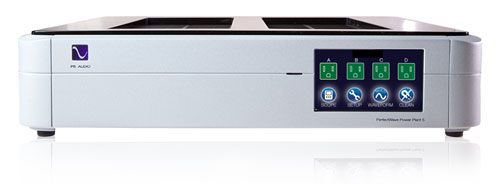Electronic Supplies and the AC Power Line urntable designers face an inevitable conflict between the demands of speed stability and the system’s ability to measure vibration. Resolution is key to musical performance, but that resolving ability is just as capable of measuring vibration generated by the motor, while good speed stability demands close coupling of motor and platter. It’s a challenge that defines the success or failure of many turntable designs, yet the least understood part of the equation is the role played by the motor’s power supply. Turntables rely for the most part on either AC synchronous or DC motors, coupled in some way to the platter. Even sophisticated, mechanically decoupled drive systems (magnetic induction or zero-contact air-bearing drives) will induce structural vibration that might be read by the cartridge, and while using higher-quality motors can help reduce inherent mechanical vibration, this doesn’t tackle the biggest single source of motor related noise -- power-line quality. Inaccuracies in the AC waveform or voltage variation can cause cogging or asynchronicity in motors, a juddering as their rotors try to get back into step. Eliminating such deficiencies in the power line is crucial to having a quiet and stable drive -- which is why power supplies are so important to turntable performance. Adding an external power supply to almost any turntable is about so much more than just adding speed adjustment; it is all about the musical benefits of smooth, stable drive.
Don’t underestimate the importance of the AC line feeding your record player. It is crucial to musical performance, and where power-supply options exist you should examine them carefully. Where no such options are offered, then products from alternative suppliers should also be considered.
|

 But unlike the constantly varying
demands that musical signals place on an amplifier, a motor presents a steady-state load
to its power supply, a situation that lends itself to the use of battery supplies
(especially with DC motors) or waveform regenerators, technologies that are widely used by
turntable manufactures and are also, in the latter case, available and extremely effective
as aftermarket units.
But unlike the constantly varying
demands that musical signals place on an amplifier, a motor presents a steady-state load
to its power supply, a situation that lends itself to the use of battery supplies
(especially with DC motors) or waveform regenerators, technologies that are widely used by
turntable manufactures and are also, in the latter case, available and extremely effective
as aftermarket units.